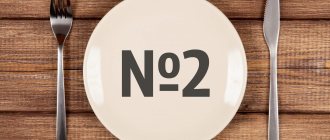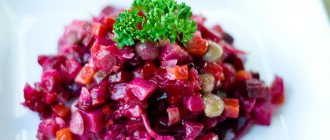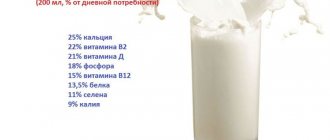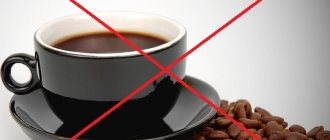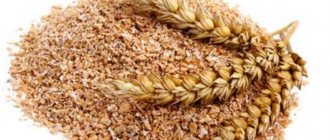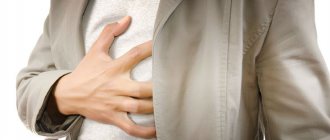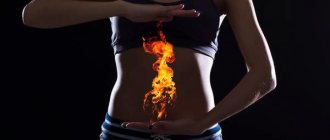Viral hepatitis C is an infectious disease. Caused by the targeted affinity of the virus for liver cells. Different types of lesions have been studied and identified. Among them, hepatitis C is distinguished by a significant proportion of latent course (5:1) and transition to a chronic form in 70% of patients. As a result, the development of cirrhosis and cancer is expected.
Treatment of the disease when liver damage is detected at a late stage is a complex set of measures to influence the pathogen, restore hepatocytes that have not yet died, stimulate the patient’s immunity, and normalize all impaired liver functions.
Diet for hepatitis C is considered one of the important components of general therapy. A rational selection of products provides the necessary set of vitamins supplied with food and supports the immune system. It is known that the combined action of vitamins C and E stimulates the production of its own interferon in a sick person. Therefore, we have the right to connect the composition of food with antiviral treatment.
The main goals of the diet for the treatment of hepatitis
The requirements for the composition of dishes are somewhat different during the acute stage (exacerbation) and during the period of remission, as well as in the presence and absence of signs of liver cirrhosis in the patient. Nutrition for hepatitis C should meet the following objectives:
- promote the restoration of damaged liver parenchyma cells;
- normalize the formation of bile and its outflow through the intrahepatic ducts;
- restore metabolism in liver cells, biochemical processes;
- ensure proper level of blood circulation;
- prevent replacement by scar tissue (cirrhosis);
- protect internal organs from negative consequences.
General rules
Among the types of hepatitis, hepatitis C is the most dangerous. significantly higher than with hepatitis A. In 75% of cases it becomes chronic, and 20-40% of patients suffer from liver cirrhosis , and in 1-4% hepatocellular carcinoma . hepatitis C virus RNA is detected in a patient’s blood for 6 months, we can talk about a chronic form of the disease. The disease is potentially fatal. Progressive liver damage often occurs without symptoms and appears at the stage of cirrhosis , when treatment is no longer effective.
The main route of transmission is through blood, which is why the disease is spreading due to syringe addiction and the reusable use of unsterile needles. Other routes of infection are also possible: hemodialysis , blood transfusion, damage to the skin with unsterile needles, transmission through saliva and during sexual intercourse. When a virus enters the body, two options are possible:
- Acute hepatitis (icteric or anicteric form) with mandatory clinical symptoms of hepatitis (liver enlargement, intoxication, asthenic and dyspeptic syndromes ).
- Asymptomatic form - there are no complaints or symptoms characteristic of hepatitis.
Acute manifest forms are mild, moderately severe and severe. In some cases, a protracted course is observed: with prolonged jaundice and an increase in enzymes in the blood. The asymptomatic form is the most common, but is not detected in the acute period. Patients are unaware that they have an infection and serve as a source of infection for others. Subsequently, subclinical forms may end in recovery or develop into chronic hepatitis.
Recovery is observed in 15-25% of all cases of acute hepatitis, in other cases there is a transition to a chronic form. In the chronic course, clinical manifestations are insignificant: increased fatigue, weakness, bad mood, there may be a decrease in appetite, nausea after fatty or spicy foods. In the chronic form with high activity, the disease has a wave-like character - periods of exacerbation are replaced by remission. Repeated exacerbations end in transition to viral cirrhosis of the liver .
Treatment and diet for hepatitis C
Treatment for hepatitis C is expensive and the likelihood of recovery is low. For treatment, it is recommended to use Roferon A (interferon alfa-2a). Interferon therapy is indicated for patients from 18 to 60 years of age, in the presence of a constant increase in the levels of ALT and HCV RNA in the blood. 3 million IU is administered 3 times a week for a year if HCV RNA disappears after 3 months from the start of treatment. If detected after 3 months of treatment, it is not advisable to continue therapy. Treatment with IFN alpha is most effective when the level of viral RNA is low and the presence of moderate histopathological changes in the liver according to biopsy results.
In addition to interferon alpha-2a, ribavirin can be used . There are several treatment regimens: IFN alpha, ribavirin in combination with IFN alpha, ribavirin alone, corticosteroids with ribavirin.
And interferon therapy is absolutely effective in 35% of patients, in 65% of cases it contributes to the positive dynamics of liver transaminases and in 29% has a supporting effect. However, 50-90% of patients experience a re-exacerbation after withdrawal. Pegasys can be considered very promising . Long-term removal of it from the body makes it possible to prescribe it once a week. Official medicine is against using fasting treatment for viral hepatitis. This is due to the fact that:
- The liver does not receive nutrients and may lose 50% of its volume. It is a metabolic , so patients experience profound metabolic disorders.
- During fasting, toxins from the intestines are absorbed and pass through the liver.
- The viral load is increasing.
- Prolonged fasting in cirrhosis can contribute to the development of hepatic encephalopathy.
It should be borne in mind that there is no confirmed data on the high effectiveness of fasting for this disease. Isolated cases of improvement in health status cannot be taken into account. Certain restrictions and exclusion from the diet of foods and foods that are harmful to the liver are considered a therapeutic diet, not fasting.
Factors such as alcohol abuse and poor diet greatly accelerate the process of liver damage. What diet should be used for hepatitis C? Patients should follow Diet No. 5 during remission, and during exacerbation - No. 5A . The range of products in this option corresponds to Diet No. 5, but it involves more thorough culinary processing - boiling and mandatory mashing or pureeing. The diet is applied for 2-4 weeks, and then the patient is transferred to the main table.
The general principles of nutrition for patients are:
- Providing complete protein (1.0–1.2 g per kg of weight).
- An increase in its content in fatty hepatosis . It has been noted that with viral hepatitis C there is pronounced fatty degeneration of hepatocytes.
- Protein restriction in liver failure in the stage of decompensation and threatening coma.
- Adequate fat content up to 80 g/day.
- Providing complex carbohydrates (they should make up 50% of the energy value) through the consumption of cereals, cereals, vegetables and fruits.
- Enrichment of the diet with vitamins ( group B , C , folates ).
- Control of salt content (limit to 8 g, and for edema and ascites - up to 2 g).
- Inclusion of specialized products in the diet (protein composite mixtures for protein correction of the diet).
The diet should not contain foods that irritate the bile ducts, as well as poorly digestible refractory fats. Patients with chronic hepatitis C are characterized by weight gain, which is due to increased calorie intake due to animal fats and large amounts of simple carbohydrates, so they are limited in their diet.
The diet for hepatitis C should contain a sufficient amount of protein, since its consumption reduces catabolic processes (decomposition), normalizes the patient’s immune status and improves liver function. Eating adequate amounts of protein is essential for muscle maintenance and liver cell regeneration.
The patient's diet is enriched with lipotropic products - they improve metabolic processes in the liver cell and prevent the development of fatty degeneration. This is lean beef, milk, whey, cottage cheese, soy, soy flour. Food is steamed, stewed, boiled or baked and served warm 5 times a day. In the basic diet, food is not crushed.
The diet must contain a sufficient amount of vitamins (group B, folic and lipoic ).
Sources of folic acid: lettuce, onions, parsley, beans, beans, lentils, broccoli, cauliflower and Brussels sprouts, regular cabbage, carrots, corn, watermelon, tomatoes, pumpkin, beets, asparagus. Lentils contain almost half of the daily value. Fruits include oranges, lemons, mineole, pears, apples, raspberries, currants, apricots, strawberries, bananas, kiwi, grapes, pomegranate, papaya. It contains: buckwheat, wheat and rye, but the amount decreases during cooking. The vitamin will be fully absorbed if you eat sprouted grains.
Lipoic acid is contained in beef, all types of cabbage, green peas, bell peppers, pumpkin, beets, onions, cassava, eggplant, rice, buckwheat, oatmeal, beef, sour cream, fermented milk drinks, eggs, pomegranate, apricots, persimmons, cherries, oranges, apples, plums, quinces, figs, black currants, mulberries, blackberries, hazelnuts, almonds, cashews.
For patients with chronic liver diseases, the supply of selenium, copper, calcium, magnesium, phosphorus is important, and in case of cirrhosis - also zinc. It has been established that zinc deficiency increases the phenomena of hepatic encephalopathy . You need to include foods with these microelements or supplement them by taking mineral-vitamin complexes.
Sources of selenium include seafood, Brazil nuts, whole grains, wholemeal flour, poultry liver, beef and pork liver, wheat bran, rice, wheat, corn.
Magnesium can be obtained by eating sesame seeds, cashews, almonds, Brazil nuts, bananas, dried apricots, prunes, grapefruit, mangoes, melons, soybeans, black beans, peanuts, leafy vegetables, pumpkin, artichoke, chard, halibut, snapper, and flounder.
High calcium content in dairy products, citrus fruits, sesame seeds.
Copper, together with vitamin C, reduces the activity of viruses and is especially important for hepatitis. Sources of copper are soybeans, hard cheeses.
Known sources of zinc include seafood, beef, animal liver, wheat bran, kohlrabi, peanuts, pine nuts, Brazil nuts, walnuts, poppy seeds, sesame seeds, pumpkin seeds and sunflower seeds.
Most patients with liver disease have vitamin D . This vitamin is produced in the body under the influence of solar radiation. But for patients with hepatitis, solar radiation can be harmful. It can worsen the course of the disease and reduce the effectiveness of antiviral treatment if the patient receives it. In addition, riboverine and sofosbuvir cause photosensitivity ( sun allergy ), accompanied by rashes, itching and even sunburn. In this regard, you should avoid prolonged exposure to the sun and take sunbathing before 10 a.m. after 6 p.m. Sunscreen with SPF 30 and protective clothing must be used.
Vitamin D can be obtained from food. These are herring, cod and halibut liver, sour cream, salmon, mackerel, fermented milk products, cottage cheese, butter. Sometimes you can afford these high-calorie foods.
For hepatitis, you can arrange fasting days: apple (up to 1.5 kg per day), vegetable (the same amount of raw vegetables, can be partially replaced with fruits), cottage cheese (norm 500 g), kefir (1.5 liters per day).
In case of liver cirrhosis with symptoms of liver failure, the amount of protein in the patient’s diet is limited. This is necessary to prevent encephalopathy.
The patient should consume mainly vegetable protein (green peas, legumes, quinoa, nuts, seeds, sesame). At the same time, protein mixtures with branched amino acids are introduced into the diet. An increase in carbohydrates in the diet due to simple and complex ones is also shown.
The use of dietary fiber is provided (cereals, wholemeal bread, vegetables, fruits, bran). Soluble dietary fiber (fruits, vegetables, dried beans, lentils, soy, oatmeal, rice, barley, nuts, seeds) and poorly absorbed disaccharides (lactulose) affect nitrogen metabolism in the intestines and are useful for liver failure. The use of zinc supplements is also important.
For mild encephalopathy, protein restriction is introduced for a short time. The amount is limited (50-75% of the age norm) to prevent cerebral edema. With progressive deficiency in a precomatous state, animal protein is completely excluded and fats are sharply limited/excluded. The patient should receive easily digestible carbohydrates in sufficient quantities: fruit and berry juices, tea with sugar, infusion of dried fruits, jelly and compotes.
Patients are prescribed parenteral nutrition, and the drinking regime is under strict control, as ascites and edema . Effective nutritional support includes enteral nutrition: docasohexaenoic acid and structured lipids, branched chain amino acids. This makes it possible to ensure normal nutrition and improve the quality of life of patients.
During the period of recovery from a coma, protein is gradually introduced into the diet and its amount is increased. A long stay on a protein-free diet does not ensure normal reparative processes in the liver. Mild ascites, which does not cause much discomfort during breathing and movement, often does not require salt restriction. In more severe cases, salt is limited to 1-2 mmol/kg body weight.
What are the rules of the diet for hepatitis C?
The use of diet in the treatment of hepatitis requires clear instructions for the patient and his compliance with the requirements both during his stay in the hospital and at home. Food should not overload the liver and other digestive organs; on the contrary, in conditions of inflammation it is necessary to create a gentle regime due to the properties of the products.
Portions are allowed to be small, and the amount of nutrition is replenished through 5-6 meals a day. Frying, smoking, and canning are excluded from cooking methods; only boiling, stewing, steaming, and baking are used. If necessary, all dishes are chopped and ground. The temperature of the food should not deviate below 15 degrees and above 50, it is optimal to keep it around 38 degrees, the food should be warm.
Established prohibitions and restrictions should be observed; expansion of the diet is possible only with the consent of the doctor after stabilization of inflammation in the liver
Nutritionists advise reducing the proportion of protein in the diet, since its digestion creates maximum stress on the digestive organs. In addition, any protein substances that turn into allergens are dangerous for the liver. Caloric content is provided by sufficient carbohydrate content.
According to Pevzner’s classification, patients with hepatitis C are prescribed diet number 5. Another name is “table number 5”. During the acute stage, more stringent restrictions are applied - table No. 5a.
What to eat and what not to eat
Let us consider a set of rules for a person’s consumption of food during illness. The diet for hepatitis C consists of certain foods containing increased doses of pectins (polysaccharides) and lipotropics (amino acids to normalize cholesterol metabolism).
You will have to follow the doctor’s instructions for a long period, even for people who have had the disease, after a complete recovery. Every person with hepatitis C should know what to eat and what not to eat.
A special diet for patients is aimed at supporting the organ, relieving acute symptoms, preventing destructive changes in tissue, improving its performance in order to prevent the development of severe complications. Below we will look at the list of products recommended by nutritionists.
Allowed
Meat prepared by steam or boiled method . Choose meat without fat. You can cook steamed beef cutlets, boiled chicken or turkey, or stewed rabbit meat.
It is allowed to eat chicken eggs , but it is better to choose 2–3 whites. You can eat one yolk a day.
Fruits . The variety of fruits and berries leaves virtually no room for prohibitions. Patients can eat apples, persimmons, bananas, lemons, apricots, figs, peaches, and melons. The main thing is that they are ripe.
Among the berries , it is better to give preference to sweet plums, watermelon, strawberries, raspberries, and cherries. Dried fruits are useful.
Vegetables . You can opt for carrots, potatoes, tomatoes, cucumbers, green peas, zucchini, beets, green beans, and broccoli.
Dairy _ It is very useful to add fermented milk products to your daily menu. This list includes milk, kefir, and any fermented milk.
cottage cheese , mild varieties of cheese.
sour cream for seasoning dishes.
Greenery . Don't forget about greens. It is useful to add lettuce, basil, parsley, and dill to dishes.
Porridge is the most valuable food, as it satisfies well and is easily digestible. You can cook semolina, oatmeal, buckwheat, rice, millet.
Fish dishes should be preferred to meat dishes. They can be prepared from pike perch, hake, cod, haddock, pike, navaga, carp, perch, blue whiting, and pollock.
Among the spices allowed are bay leaf, turmeric, cloves, cinnamon, and vanilla.
Bakery . You can eat crackers, dry cookies, biscuits.
Dessert . Those with a sweet tooth will not be left without a treat. These are marshmallows, jam, honey, mousses, jelly, jam, marmalade, fruit and berry marshmallows.
Beverages . Give preference to a decoction of wheat bran or rose hips, fruit and vegetable juices (except citrus fruits), teas, chicory, compotes, jelly, non-carbonated mineral water, and non-sour fruit drinks.
Soups are prepared with vegetable, dairy, fruit, cereals, and noodles.
Oil . You can eat butter and any vegetable oils.
Sauces . Prepared from vegetables, sour cream, milk.
Prohibited
Smoked meats . It is forbidden to eat loin, brisket, carbonate, ham, bacon, or any sausage.
Spicy seasonings and sauces are prohibited. This is mayonnaise, ketchup, black and red pepper, mustard.
Confectionery products . Exclude baked goods, cakes, pastries, pancakes, pies, and chocolates.
Fatty meat is not included in the diet, so dishes from fatty poultry and animals should be ignored.
Fruits . The partially restricted list includes kiwi, gooseberry, orange, pineapple, tangerine and other citrus fruits, the exception to the rule is lemon. It helps cleanse the lymph nodes of the liver, restores the bile ducts, removes toxins and carcinogens from the body. It is used in consultation with the attending physician.
Vegetables . You cannot eat radishes (of any variety), sorrel, green onions, radishes, garlic, spinach.
soups with meat, chicken, fish broth or mushroom broth.
Seasonings that irritate the gastrointestinal tract (ginger, mustard, horseradish, hot pepper).
Fish . You need to give up fatty salmon, salmon, trout, mackerel, flounder, and sardines.
Conservation . Vegetables, mushrooms of home and industrial production. Oilseeds: olives, black olives, nuts.
Beverages . Cream, fermented baked milk, baked milk, fatty cheese, and ice cream should be excluded.
Beverages . You should not drink all alcohol, carbonated water, lemonade, cocoa, coffee, and strong tea.
By-products - it is prohibited to prepare food from the brain, heart, kidneys, or fish oil.
Any fried foods , as they destroy liver tissue due to the content of huge amounts of carcinogens and toxins.
Based on this information, we can draw the following conclusion that it is more necessary to consume foods rich in vitamins, microelements, and carbohydrates. Food is prepared by steaming, boiling, or baking.
Characteristics of table No. 5
Dietary table 5 is prescribed not only for viral hepatitis, but also for liver damage of another nature, cholecystitis, diseases of the biliary tract, and severe poisoning. The menu for a hepatitis diet reduces the amount of proteins to 100 g/day, fats - 80–90 g, carbohydrates within normal limits - 450 g, salt is controlled to no more than 10 g.
In this case, it is required to include half of animal proteins, to provide no more than 70 g of carbohydrates due to sugar, and to provide 60% of vegetable origin among fats. Calorie content should not exceed 3000 kcal. The menu calculation provides for the supply of the required amount of microelements (calcium, phosphorus, magnesium, iron) and vitamins with food.
When cooking, the use of trans fats (margarine, other preservatives) is strictly prohibited; partially hydrogenated oils and foods high in cholesterol are excluded.
Fresh vegetables, fruits and herbs are recommended. Dried fruits and juices do not provide a complete replacement for vitamins, but significantly increase caloric intake. They try to exclude sugar from the cooking process; sweetening is done directly into tea or the finished dish. Honey containing less glucose (31%) but other sugars in sufficient quantities (48% due to fructose, sucrose, maltose, melicitose) is more indicated.
The limitation is individual sensitivity and a tendency to allergies. Of the recommended cereals, it is preferable to use whole grains rather than flakes. When processed, flakes lose part of their beneficial composition. Plant proteins are provided in dishes with nuts, seeds, and legumes. Water load allows you to drink up to 2 liters of water per day.
Fully or partially limited products
- Fried foods, since heat treatment of fats produces oxidation products that have an adverse effect on the liver.
- Highly extractive dishes (stews, broths).
- Products with any chemical additives.
- It is prohibited to consume fatty meat and fish, cooking fats, goose and duck meat, sausages, canned food, smoked meats, lard, salted fish, full-fat milk, full-fat cottage cheese and cream. All these products are difficult to digest and put a lot of stress on the liver.
- Fresh bread, yeast baked goods, cakes and pastries with butter cream, puff pastry.
- Products containing essential oils and oxalic acid.
- Foods high in cholesterol .
- Kvass, legumes and white cabbage (if poorly tolerated), as they can cause flatulence .
- Hard-boiled and fried eggs, as in this form they are difficult to digest.
- Spicy seasonings and sauces.
- You should not drink black coffee, cocoa and chocolate.
Table of prohibited products
| Proteins, g | Fats, g | Carbohydrates, g | Calories, kcal | |
Vegetables and greens | ||||
| canned vegetables | 1,5 | 0,2 | 5,5 | 30 |
| swede | 1,2 | 0,1 | 7,7 | 37 |
| peas | 6,0 | 0,0 | 9,0 | 60 |
| bulb onions | 1,4 | 0,0 | 10,4 | 41 |
| chickpeas | 19,0 | 6,0 | 61,0 | 364 |
| radish | 1,2 | 0,1 | 3,4 | 19 |
| white radish | 1,4 | 0,0 | 4,1 | 21 |
| beans | 7,8 | 0,5 | 21,5 | 123 |
| horseradish | 3,2 | 0,4 | 10,5 | 56 |
| spinach | 2,9 | 0,3 | 2,0 | 22 |
| sorrel | 1,5 | 0,3 | 2,9 | 19 |
Berries | ||||
| grape | 0,6 | 0,2 | 16,8 | 65 |
Mushrooms | ||||
| mushrooms | 3,5 | 2,0 | 2,5 | 30 |
| marinated mushrooms | 2,2 | 0,4 | 0,0 | 20 |
Nuts and dried fruits | ||||
| peanut | 26,3 | 45,2 | 9,9 | 551 |
Snacks | ||||
| potato chips | 5,5 | 30,0 | 53,0 | 520 |
Flour and pasta | ||||
| vareniki | 7,6 | 2,3 | 18,7 | 155 |
| dumplings | 11,9 | 12,4 | 29,0 | 275 |
Bakery products | ||||
| buns | 7,9 | 9,4 | 55,5 | 339 |
| Rye bread | 6,6 | 1,2 | 34,2 | 165 |
Confectionery | ||||
| pastry cream | 0,2 | 26,0 | 16,5 | 300 |
| shortbread dough | 6,5 | 21,6 | 49,9 | 403 |
Ice cream | ||||
| ice cream | 3,7 | 6,9 | 22,1 | 189 |
Chocolate | ||||
| chocolate | 5,4 | 35,3 | 56,5 | 544 |
Raw materials and seasonings | ||||
| mustard | 5,7 | 6,4 | 22,0 | 162 |
| mayonnaise | 2,4 | 67,0 | 3,9 | 627 |
Dairy | ||||
| milk 4.5% | 3,1 | 4,5 | 4,7 | 72 |
| cream 35% (fat) | 2,5 | 35,0 | 3,0 | 337 |
| whipped cream | 3,2 | 22,2 | 12,5 | 257 |
Cheeses and cottage cheese | ||||
| parmesan cheese | 33,0 | 28,0 | 0,0 | 392 |
Meat products | ||||
| fatty pork | 11,4 | 49,3 | 0,0 | 489 |
| salo | 2,4 | 89,0 | 0,0 | 797 |
| bacon | 23,0 | 45,0 | 0,0 | 500 |
Sausages | ||||
| smoked sausage | 9,9 | 63,2 | 0,3 | 608 |
Bird | ||||
| smoked chicken | 27,5 | 8,2 | 0,0 | 184 |
| duck | 16,5 | 61,2 | 0,0 | 346 |
| smoked duck | 19,0 | 28,4 | 0,0 | 337 |
| goose | 16,1 | 33,3 | 0,0 | 364 |
Fish and seafood | ||||
| smoked fish | 26,8 | 9,9 | 0,0 | 196 |
| black caviar | 28,0 | 9,7 | 0,0 | 203 |
| salmon caviar granular | 32,0 | 15,0 | 0,0 | 263 |
| salmon | 19,8 | 6,3 | 0,0 | 142 |
| canned fish | 17,5 | 2,0 | 0,0 | 88 |
| salmon | 21,6 | 6,0 | — | 140 |
| trout | 19,2 | 2,1 | — | 97 |
Oils and fats | ||||
| animal fat | 0,0 | 99,7 | 0,0 | 897 |
| cooking fat | 0,0 | 99,7 | 0,0 | 897 |
Alcoholic drinks | ||||
| dry red wine | 0,2 | 0,0 | 0,3 | 68 |
| vodka | 0,0 | 0,0 | 0,1 | 235 |
| beer | 0,3 | 0,0 | 4,6 | 42 |
Non-alcoholic drinks | ||||
| soda water | 0,0 | 0,0 | 0,0 | — |
| cola | 0,0 | 0,0 | 10,4 | 42 |
| instant coffee dry | 15,0 | 3,5 | 0,0 | 94 |
| sprite | 0,1 | 0,0 | 7,0 | 29 |
Juices and compotes | ||||
| tomato juice | 1,1 | 0,2 | 3,8 | 21 |
| * data is per 100 g of product | ||||
When is table 5a needed?
Table 5a is prescribed during an exacerbation of hepatitis C, with pronounced concomitant symptoms of enterocolitis, gastritis, duodenitis. The diet is more gentle. Only pureed dishes are used. Products with extractive substances, coarse fiber and cholesterol are removed from the diet as much as possible. In terms of composition: the amount of fat is reduced to 50–70 g, salt - to 6 g, the protein content remains 100 g.
Usually the patient needs 1.5–2 weeks, after which he is transferred to a full-fledged table 5.
Table 5a is used for abdominal pain and diarrhea in patients with viral hepatitis
About the disease
Hepatitis C is an inflammation of the liver tissue, which is provoked by an RNA-containing hepatotropic virus. Tropicness means orientation; The pathogen targets the liver. It penetrates into its cells - hepatocytes - where it carries out a chain of sequential reactions with the aim of replication (reproduction) of new viral particles.
In addition to hepatocytes, the virus is found in immunocompetent blood cells - monocytes and lymphocytes.
It is prone to mutations and has several main genotypes that respond differently to drug therapy.
It has a destructive (cytopathic) effect on cells, and its persistence (preservation) in hepatocytes leads to their damage as a result of an immune reaction.
How can a virus enter the body? To do this, it uses three mechanisms:
- parenteral (contact with blood of the skin or mucous membrane when their integrity is violated, blood transfusion (blood transfusion) from an infected donor or carrier);
- sexual (transmission of the pathogen through genital secretions during unprotected sexual contact; the presence of abrasions and other damage to the mucous membrane that may bleed is also important);
- vertical (infection of a child in the womb or during passage through the birth canal).
Symptoms of hepatitis C may not appear immediately. The latent period of chronic infection is often observed, and its duration depends on many factors, including the condition of the liver and the body as a whole (concomitant diseases, immunodeficiency).
In its acute form, the disease can be erased, but even with a clear clinical picture, without laboratory testing it is impossible to differentiate hepatitis C from other infectious and non-infectious inflammatory lesions of the liver. Among the main features are:
- Constant, unmotivated weakness, fatigue.
- Lack of appetite, nausea.
- Increased body temperature.
- Enlarged liver (hepatomegaly).
- Heaviness and pain in the right upper abdomen.
- Joint pain.
- Jaundice coloration of the skin, mucous membranes and sclera.
- Skin itching.
- Dark urine, gray feces.
The definitive diagnosis of hepatitis C is never made by clinical manifestations alone, even if complications such as cirrhosis, portal hypertension and chronic liver failure have developed.
Confirmation requires specific laboratory methods that detect antibodies to the pathogen (ELISA, or enzyme-linked immunosorbent assay) or its RNA (PCR, or polymerase chain reaction). Based on the results of ELISA, you can verify the duration of infection based on the class of antibodies detected.
Immunoglobulins M are signs of the acute phase of infection, and immunoglobulins G prove the chronic course.
This is important, first of all, for therapeutic tactics. Additional information is provided by general clinical and biochemical blood tests, ultrasound examination of the abdominal organs, and liver biopsy.
What foods are recommended in the diet?
The list of what you can eat if you have hepatitis includes:
Diet for liver pain + menu
- dried wheat bread;
- boiled and baked dishes from meat and fish of lean varieties, both minced meat products and pieces are allowed;
- unrich soups, broth with croutons;
- milk soups, vegetable soups with cereal dressing, beetroot soup;
- salads from fresh vegetables with herbs;
- stewed vegetables (zucchini, pumpkin, carrots, green peas, young beans, onions are added after boiling);
- low-fat milk and fermented milk products (cottage cheese, sour cream, kefir, curdled milk, yogurt);
- mild hard cheese;
- cereal porridges and casseroles from rice, buckwheat, oats;
- pasta;
- eggs, one twice a week, boiled or as additives in various dishes, omelettes;
- nuts and seeds;
- fresh uncanned vegetable and berry-fruit juices;
- green and herbal tea with chamomile, immortelle, sage, rosehip decoction, weak coffee with milk;
- compotes, jelly, a little jam;
- cracker.
Of the berries and fruits that can be eaten with hepatitis, only non-acidic varieties are selected. You are allowed to eat lemon with sugar. Below is a table of products containing vitamins C and E (stimulating the synthesis of interferons).
| Vitamin | Contained in products |
| E (tocopherol) | All grains (by sprouting the content increases significantly), vegetable oils (sunflower, olive, rapeseed, flaxseed, sea buckthorn, milk thistle), soy products (baked goods, tofu cheese, drink), legumes, leafy greens, nuts (almonds, peanuts , hazelnuts, walnuts), sunflower seeds, pumpkin |
| C (ascorbic acid) | Avoid eating spinach and cabbage. Allowed: tomato salads with parsley, bell peppers, carrots, rose hips, black currants, strawberries, oranges, rowan berry jam |
Authorized Products
Proper nutrition during remission includes:
- Lean meat and poultry (beef, chicken, turkey, veal should be preferred; pork can be consumed in limited quantities), prepared by boiling and baking after boiling. For variety, you can prepare dishes from minced meat (cutlets, zrazy, quenelles, meatballs, casseroles).
- Low-fat fish, which should be included in the diet more often than meat, since it is easier to digest. Fish dishes are also prepared boiled and baked. They use cod, blue whiting, pike perch, pollock, navaga, pike, and hake.
- Sour cream or milk sauces for meat, fish and vegetable dishes. These sauces are used for baking.
- Soups with vegetable broths. They are prepared with cereals, pasta or vegetables. During the period of remission, the components of soups are not crushed, and the diet is expanded to include borscht and cabbage soup, which can be cooked with Savoy cabbage if white cabbage causes bloating. A prerequisite for preparing first courses is not to use fried vegetables and limit the amount of tomato paste.
- Gray and white bread, maybe rye and with bran. Any bread is consumed dried. Patients can eat biscuits, biscuits, and baked pies made from soft dough.
- Many vegetables (excludes radishes, garlic, mushrooms, green onions, pickled vegetables). They are consumed raw or stewed. You can make puree from green peas. Green peas are a light protein food that, unlike dishes made from mature legumes, does not cause bloating. You can add non-acidic sauerkraut to vinaigrettes, and season dishes with dill and parsley.
- Fruits and berries in any form. The only condition is that they must be ripe. Dried fruits are useful for patients because they contain microelements necessary for this disease. Compotes, jelly, and jelly are prepared from fruits.
- Moderate amount of sweets. There may be meringues and meringues, marmalade, caramel, candies without chocolate, natural marshmallows, jam and honey.
- Eggs are consumed in the form of omelettes or soft-boiled.
- Butter (20-30 g), as it is highly digestible and contains fat-soluble vitamins. It is necessary to limit refractory fats due to the fact that they are poorly absorbed and cause the development of fatty liver degeneration. It is very important to consume vegetable oils, which enhance bile formation and bile secretion. Unsaturated fatty acids in vegetable oils activate lipolysis (fat breakdown) and improve cholesterol metabolism. You can use any unrefined oils (olive, cottonseed, soybean, sunflower, flaxseed, corn). They are added in their natural form to dishes. The amount depends on tolerance - usually 2-3 tbsp. l.
- Low-fat dairy products, which have a lipotropic effect, should be present in the diet daily. In addition, they provide the patient with calcium. You can consume kefir, yogurt without additives, acidophilus, yogurt, low-fat cottage cheese and milk as part of your meals. Sour cream is used as a seasoning for dishes.
- Any cereals from which porridges, casseroles with vegetables and cottage cheese are prepared.
- Weak green tea, herbal tea, still water, vegetable and fruit juices, rosehip infusion.
Table of permitted products
| Proteins, g | Fats, g | Carbohydrates, g | Calories, kcal | |
Vegetables and greens | ||||
| zucchini | 0,6 | 0,3 | 4,6 | 24 |
| cabbage | 1,8 | 0,1 | 4,7 | 27 |
| broccoli | 3,0 | 0,4 | 5,2 | 28 |
| carrot | 1,3 | 0,1 | 6,9 | 32 |
| cucumbers | 0,8 | 0,1 | 2,8 | 15 |
| salad pepper | 1,3 | 0,0 | 5,3 | 27 |
| parsley | 3,7 | 0,4 | 7,6 | 47 |
| iceberg lettuce | 0,9 | 0,1 | 1,8 | 14 |
| tomatoes | 0,6 | 0,2 | 4,2 | 20 |
| pumpkin | 1,3 | 0,3 | 7,7 | 28 |
| dill | 2,5 | 0,5 | 6,3 | 38 |
Fruits | ||||
| bananas | 1,5 | 0,2 | 21,8 | 95 |
| apples | 0,4 | 0,4 | 9,8 | 47 |
Nuts and dried fruits | ||||
| raisin | 2,9 | 0,6 | 66,0 | 264 |
| dried figs | 3,1 | 0,8 | 57,9 | 257 |
| dried apricots | 5,2 | 0,3 | 51,0 | 215 |
| dried apricots | 5,0 | 0,4 | 50,6 | 213 |
| prunes | 2,3 | 0,7 | 57,5 | 231 |
Cereals and porridges | ||||
| buckwheat (kernel) | 12,6 | 3,3 | 62,1 | 313 |
| oat groats | 12,3 | 6,1 | 59,5 | 342 |
| pearl barley | 9,3 | 1,1 | 73,7 | 320 |
| rice | 6,7 | 0,7 | 78,9 | 344 |
Flour and pasta | ||||
| pasta | 10,4 | 1,1 | 69,7 | 337 |
| noodles | 12,0 | 3,7 | 60,1 | 322 |
| buckwheat noodles | 14,7 | 0,9 | 70,5 | 348 |
Bakery products | ||||
| bran bread | 7,5 | 1,3 | 45,2 | 227 |
| whole grain bread | 10,1 | 2,3 | 57,1 | 295 |
Confectionery | ||||
| jam | 0,3 | 0,2 | 63,0 | 263 |
| jelly | 2,7 | 0,0 | 17,9 | 79 |
| marshmallows | 0,8 | 0,0 | 78,5 | 304 |
| milk candies | 2,7 | 4,3 | 82,3 | 364 |
| fondant candies | 2,2 | 4,6 | 83,6 | 369 |
| fruit and berry marmalade | 0,4 | 0,0 | 76,6 | 293 |
| paste | 0,5 | 0,0 | 80,8 | 310 |
| Maria cookies | 8,7 | 8,8 | 70,9 | 400 |
Raw materials and seasonings | ||||
| honey | 0,8 | 0,0 | 81,5 | 329 |
| sugar | 0,0 | 0,0 | 99,7 | 398 |
Dairy | ||||
| kefir 1.5% | 3,3 | 1,5 | 3,6 | 41 |
| Ryazhenka | 2,8 | 4,0 | 4,2 | 67 |
Cheeses and cottage cheese | ||||
| cottage cheese 1% | 16,3 | 1,0 | 1,3 | 79 |
Meat products | ||||
| beef | 18,9 | 19,4 | 0,0 | 187 |
| rabbit | 21,0 | 8,0 | 0,0 | 156 |
Bird | ||||
| boiled chicken breast | 29,8 | 1,8 | 0,5 | 137 |
| boiled chicken drumstick | 27,0 | 5,6 | 0,0 | 158 |
| boiled turkey fillet | 25,0 | 1,0 | — | 130 |
Eggs | ||||
| soft-boiled chicken eggs | 12,8 | 11,6 | 0,8 | 159 |
Fish and seafood | ||||
| flounder | 16,5 | 1,8 | 0,0 | 83 |
| pollock | 15,9 | 0,9 | 0,0 | 72 |
| cod | 17,7 | 0,7 | — | 78 |
| hake | 16,6 | 2,2 | 0,0 | 86 |
Oils and fats | ||||
| butter | 0,5 | 82,5 | 0,8 | 748 |
| olive oil | 0,0 | 99,8 | 0,0 | 898 |
| sunflower oil | 0,0 | 99,9 | 0,0 | 899 |
Non-alcoholic drinks | ||||
| water | 0,0 | 0,0 | 0,0 | — |
| mineral water | 0,0 | 0,0 | 0,0 | — |
| green tea | 0,0 | 0,0 | 0,0 | — |
Juices and compotes | ||||
| apricot juice | 0,9 | 0,1 | 9,0 | 38 |
| carrot juice | 1,1 | 0,1 | 6,4 | 28 |
| peach juice | 0,9 | 0,1 | 9,5 | 40 |
| plum juice | 0,8 | 0,0 | 9,6 | 39 |
| pumpkin juice | 0,0 | 0,0 | 9,0 | 38 |
| rose hip juice | 0,1 | 0,0 | 17,6 | 70 |
| * data is per 100 g of product | ||||
What should you not eat if you have hepatitis C?
Prohibited products include:
- fatty meat (lamb, pork), fish, poultry (duck, goose);
- rich meat and fish soups;
- products from liver, kidneys, brains;
- salted and pickled vegetables, canned food;
- smoked and semi-smoked meat products;
- hot seasonings and spices, garlic;
- cooking oil, lard;
- pastries made from butter dough, cakes with cream;
- chocolate, cocoa;
- dishes with mushrooms;
- juiced vegetables (radish, cabbage, turnip, sorrel, spinach):
- carbonated drinks;
- ice cream;
- all types of alcohol;
- strong tea and coffee;
- sour fruits and berries.
What you need to focus on
In a normal liver, blood proteins are synthesized - globulins and albumin, which a diseased liver is not able to prepare in sufficient quantities. We need to help her, add protein to her food. Where are proteins found? In any meat, fish, poultry, you just need to take into account that it is also not possible to have an excessively fatty product containing proteins due to the impossibility of producing a sufficient amount of bile. For example, duck is fatty, but you can also find a lean piece in it. But the mackerel is all fatty, don’t look for it. Choose the product that is more familiar, accessible and suitable for your financial capabilities.
Proteins are also found in milk, but an adult loses the enzyme that prepares milk for inclusion in biochemical processes. If the body accepts it without diarrhea, then you can eat cottage cheese. Not all lactic acid products are suitable, for example, yoghurt is not the most suitable product for Russians; the centuries-old genetic apparatus is ready to process kefir, yogurt and fermented baked milk. Kefir is not suitable for the peoples of the Caucasus; they have their own national curdled milk - matsoni and so on. So you need to eat them, without trying to adjust your body to something that was not native to it before.
Diet for chronic hepatitis C with cirrhotic changes in the liver
After treatment in a hospital, where dietary intake is strictly controlled, the patient is discharged and must at least comply with the requirements for 1–2 years. Under the supervision of a doctor, the stage of recovery is determined based on the test results. With the support of minimal virus activity, a chronic process forms in the liver.
The worst thing about diagnosing viral hepatitis C is detecting the disease in the chronic stage. Such a patient will have to undergo treatment all his life and follow a strict diet. Table No. 5 is recommended, split frequent meals up to 6 times a day, in small portions. Patients must permanently give up alcohol, fatty foods, and preservatives.
Allowed:
- dietary yesterday's bread;
- lean types of meat, poultry, fish;
- milk soups, porridges, sour milk products (cottage cheese, kefir, yogurt);
- cereal porridge;
- daily fresh non-acidic fruits, vegetable salads, seasoned with vegetable oil and herbs;
- sweets with only light carbohydrates (marmalade, honey, marshmallows, honey);
- rosehip decoction;
- fruit compote and jelly;
- fresh juices.
It is better to choose marmalade that is not coated with sugar, it contains fewer light carbohydrates
Prohibited:
- any fried, smoked dishes;
- fatty meat and fish, duck, goose;
- pickled and salted vegetables;
- hot seasonings, sauces;
- baked goods;
- mushrooms;
- legumes;
- eggs (both boiled and fried);
- heavy cream and sour cream, sour cottage cheese;
- canned food
If the condition worsens, pureed dishes and jelly are prescribed.
General recommendations
Doctors always recommend to patients: “Eat properly and variedly.” The list of foods that are good for the liver is quite extensive and allows you to prepare a wide variety of dishes. You can mix vegetables without restrictions (except for prohibited ones), stew them, bake them, and prepare a variety of salads. As a dessert, it is recommended to use fruit puree with honey or dried fruits.
You can boil meat and fish with root vegetables and vegetables. But the resulting broth is contraindicated. Boiled beef or poultry can be eaten ready-made or stewed with vegetables, or used to make salads. Steam cutlets and soufflé are allowed from minced meat.
Example of a recommended menu for a week
Here is a sample menu for 7 days of the week, starting from Monday. Dishes can be replaced with equivalent ones, in accordance with a person’s taste, but it is better to leave the frequency of meals 5-6 times a day and include snacks, second breakfast, and afternoon snack.
Day 1
- Breakfast - milk porridge with rice, green tea.
- Snack - baked apple, rose hip decoction with dry bread.
- Lunch - vegetarian noodle soup, steamed minced chicken cutlet, buckwheat, compote.
- Afternoon snack - kefir and biscuits.
- Dinner - boiled fish, mashed potatoes, tomato salad.
- At night - yogurt.
Day 2
- Breakfast - milk buckwheat porridge, green tea.
- Snack - orange.
- Lunch - fish soup, meatballs with noodles.
- Afternoon snack - berry jelly.
- Dinner: cottage cheese with sour cream.
- Before bed - an apple.
Day 3
- Breakfast - rice porridge with pumpkin, rosehip infusion.
- Snack - banana.
- Lunch - beetroot soup with sour cream, steamed cutlet with buckwheat.
- Afternoon snack - fruit jelly with white crackers.
- Dinner - boiled fish with stewed vegetables, green tea.
- At night - yogurt or kefir.
Day 4
- Breakfast - cottage cheese puree with carrots and apples, coffee with milk.
- Snack - orange.
- Lunch - milk soup with noodles, stuffed bell peppers.
- Afternoon snack - berry jelly.
- Dinner - vegetable stew, green tea.
- At night - sour milk or yogurt.
Day 5
- Breakfast - a handful of nuts, a glass of kefir.
- Snack - steamed omelette and vegetable salad.
- Lunch - soup with meatballs in vegetable broth, rice porridge.
- Afternoon snack - apple.
- Dinner - boiled fish with rice.
- At night - a banana.
Day 6
- Breakfast - oatmeal with fruit, vegetable salad, tea with condensed milk.
- Snack - fresh cottage cheese, rosehip decoction with biscuits.
- Lunch - vegetarian soup with sour cream, stewed zucchini, jelly.
- Afternoon snack - green tea with marmalade.
- Dinner - boiled fish with pasta, green tea.
- At night - kefir.
Day 7
- Breakfast - steamed egg omelet, coffee with milk.
- Snack - apple.
- Lunch - chicken noodle soup, vegetable salad, steam cutlet, rosehip broth.
- Afternoon snack - carrot puree with honey.
- Dinner - rice and cottage cheese casserole with raisins and jam, tea with lemon.
- At night - yogurt with crackers.
The healthiest nuts are walnuts.
Recipes
The dishes of the fifth table are quite varied and this diet can be compared with a common table, but in comparison with it, this therapeutic diet does not include the consumption of fried foods. Remember that the main thing is low-fat and non-fried foods. A quick breakfast option can be milk porridge, omelettes, boiled eggs or low-fat cottage cheese with dried fruits.
Light snacks can consist of baked pumpkin and baked apples, juice with cookies, pumpkin porridge or carrot-pumpkin puree with dried fruits. Below are options for first and second lunch courses. Use vegetables more widely: cauliflower, Savoy or Brussels sprouts can be cooked in milk or sour cream sauce, vegetable stew, potato roll with peas and carrots, cabbage rolls with vegetables, zucchini stuffed with vegetables and rice.
Using modern technologies, many dishes can be prepared in a slow cooker - this will save time and diversify your diet. In it you can make low-fat casseroles and muffins from healthy oat or buckwheat flour with dried fruits. You can choose simple recipes for dishes that require little time to prepare.
First meal
Cauliflower soup
Potatoes, carrots, sweet peppers, cauliflower, butter.
Place diced potatoes into boiling water. After 10 minutes, add carrots, bell peppers, cabbage disassembled into inflorescences and bay leaves. Cook until the vegetables are ready, add salt and a little green onion. Before serving, add butter.
Oatmeal soup with milk and prunes
Oatmeal, water, milk, salt, prunes.
Boil oatmeal in water, mash, add salt (add sugar for dessert). Add milk to the desired consistency, heat again, add prunes and let it brew. At the end add butter.
Second courses
Fish soufflé
Beat the boiled pollock or hake fillet in a blender, add butter, semolina and egg yolks. Knead well, add a little salt and fold in the beaten egg whites. Place in pan and bake.
Steamed fish with vegetables
Hake fillet, cauliflower, zucchini, green beans, carrots, butter. Chop vegetables randomly. Place vegetables, fish fillets in a steaming dish, add bay leaf and salt. Steam, pour melted butter over the finished dish and sprinkle with lemon juice.
One-day diet menu 5a
If the condition worsens, it is recommended to switch to diet 5a.
Breakfast - semolina porridge with milk, protein omelet, rosehip decoction with white croutons.
Snack - baked apple or grated carrots.
Lunch - half a portion of vegetable soup with rice, buckwheat milk porridge, berry jelly.
Afternoon snack - jelly.
Dinner - pureed meatballs, mashed potatoes seasoned with olive oil, tea with milk.
Before bed - kefir or yogurt.
How long to continue the diet?
Treatment of hepatitis C requires a long-term diet. Typically, patients do not experience difficulties, since it differs little from a healthy diet. The duration of the restrictions depends on the individual characteristics of the patient’s gastrointestinal tract.
In case of exacerbation of chronic hepatitis, a more strict diet 5a is prescribed for 2 weeks. When the blood biochemistry indicators approach normal, they move on to a full table 5. The doctor usually provides a trial period for several days, observing how the patient’s body will react to an expanded diet. If pain does not appear and there are no other deteriorations, then it is recommended to continue to adhere to table No. 5.
Over time, you can switch to four meals a day. The general principles of diet cannot be violated throughout your life. A big mistake is made by people who allow themselves, first on holidays, and then more and more often, to drink alcohol, spicy snacks and fried foods. The process of necrosis of liver cells, previously suspended, will go much faster. The result will be irreversible disorders and lack of effect from medications.
The WHO has declared hepatitis C a curable disease due to the production of drugs that can stop the mutating virus. However, the role of nutrition remains indispensable in therapy. Patients should be guided by mandatory requirements when choosing products.
Reviews and results
Patients with liver disease should adhere to a diet constantly, given that the disease tends to progress. This healthy diet does not burden the digestive organs and does not cause deterioration of the condition. Reviews from patients once again confirm this. The food is nutritious and quite varied, so patients do not consider themselves disadvantaged in anything.
- “...Hepatitis C was discovered by accident. I was worried about fatigue, I was constantly tired and nothing made me happy. She was tested and found to have elevated liver enzymes. I repeated the tests for three months and the third time they showed the presence of hepatitis. I know that I am incurable, although they offer very expensive treatment. You need to maintain a healthy lifestyle, no alcohol, diet and moderate physical activity. I have a more fruit and vegetable diet. Be sure to eat low-fat cottage cheese, oatmeal, carrots, beets, a lot of pumpkin and chicken every day, drink flaxseed oil and freshly prepared juices. I allow myself soaked herring and natural brewed coffee. Ban on smoked, fried and fatty foods”;
- “... The doctor said that with hepatitis C you need to constantly adhere to a diet. Given my weight, she is not overweight. I eat everything boiled or baked. I add herbs (fresh or dried) and sometimes a little pepper to my dishes. The food is complete and you don’t have to go hungry, you just need to find recipes for dietary dishes. If I eat dishes with seasoning, then I don’t feel very good. Although saffron, turmeric, anise, cinnamon and ginger are actively used in Indian medicine, including for hepatitis. Of course, my diet does not include fatty, smoked or fried foods. I bought myself a slow cooker and now I cook everything in it. My family thinks that I eat bland food, but I’m already used to it. I believe that following a diet helps maintain good health, although it involves additional hassle and time.”
